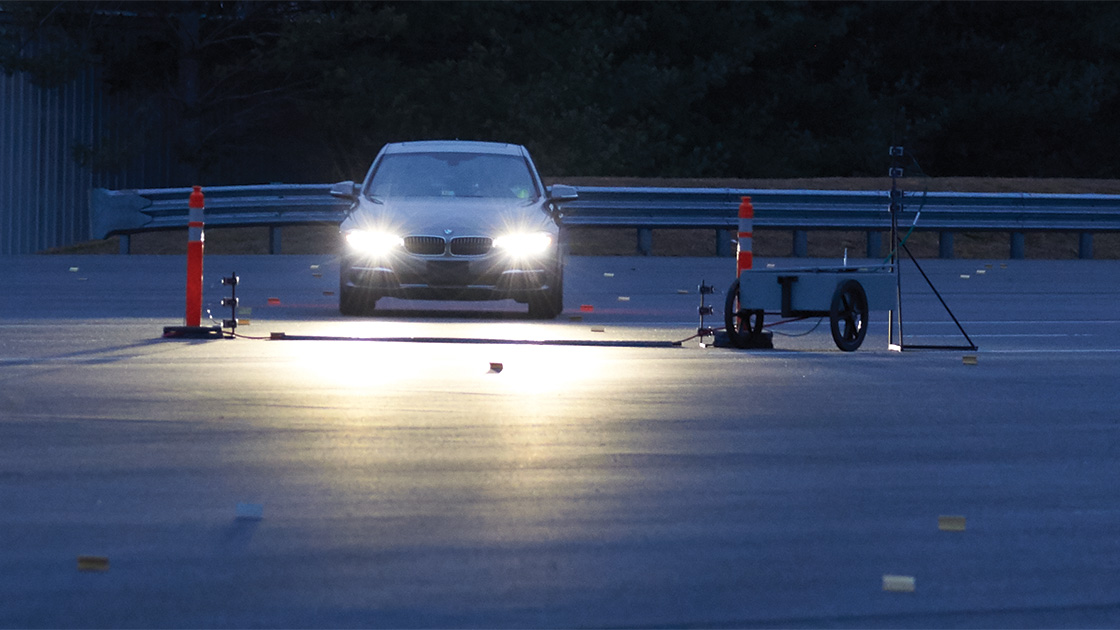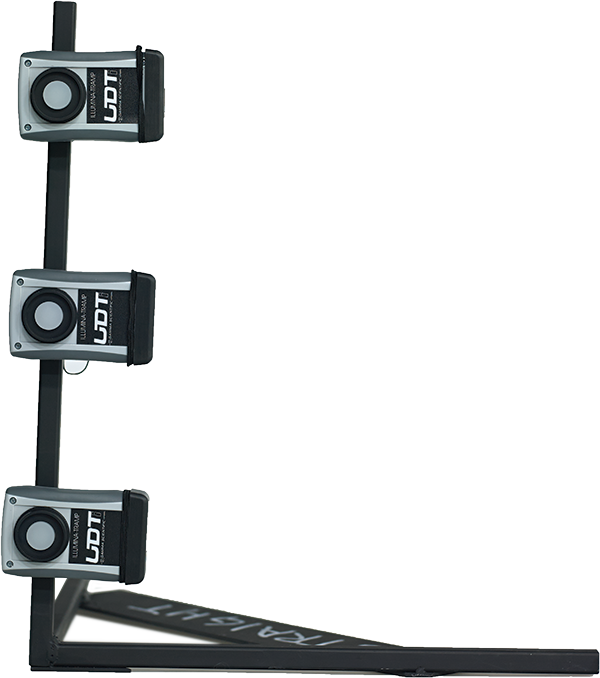New ratings show most headlights need improvement
March 30, 2016

The latest crash avoidance ratings from IIHS focus on some of the most basic, familiar equipment — headlights — and the results are dismal.
Out of 31 midsize cars evaluated, only one — the Toyota Prius v — is available with a headlight system that earns a good rating. The best available headlights on 11 cars earn an acceptable rating, while nine only reach a marginal rating. Ten of the vehicles can't be purchased with anything other than poor-rated headlights.
A vehicle's price tag is no guarantee of decent headlights. Many of the poor-rated headlights belong to luxury vehicles. The BMW 3 series has the lowest-scoring headlight system.
"If you're having trouble seeing behind the wheel at night, it could very well be your headlights and not your eyes that are to blame," says David Zuby, IIHS executive vice president and chief research officer.
The ability to see the road ahead, along with any pedestrians, bicyclists or obstacles, is an obvious essential for drivers. However, government standards for headlights, based on laboratory tests, allow huge variation in the amount of illumination that headlights provide in actual on-road driving. With about half of traffic deaths occurring either in the dark or in dawn or dusk conditions, improved headlights have the potential to bring about substantial reductions in fatalities.
Recent advances in headlight technology make it a good time to focus on the issue. In many vehicles, high-intensity discharge (HID) or LED lamps have replaced halogen ones. Curve-adaptive headlights, which swivel according to steering input, also are becoming more widespread, and IIHS and HLDI research shows that they are improving visibility and reducing crashes.
An IIHS study with volunteers found that curve-adaptive headlights on the 2013 Mazda 3 allowed drivers to spot a hard-to-see object on a dark, curvy road about 15 feet earlier than they did when the same model was equipped with conventional headlights. The study also found a benefit for HID headlights over halogen ones even when they were fixed (see "Adaptive headlights help drivers spot objects earlier," Oct. 9, 2014).
Earlier HLDI analyses found that vehicles equipped with curve-adaptive headlights have lower claim rates for damage to other vehicles and, in most cases, for injuries to occupants of other vehicles and to other road users.
Developing a new test
Despite the research showing advantages for curve-adaptive and HID headlights, those features don't guarantee good headlight performance. When that fact became clear during preliminary testing, IIHS engineers developed a rating system that doesn't favor one lighting technology over the other, but simply rewards systems that produce ample illumination without excessive glare for drivers of oncoming vehicles.
The headlights are evaluated on the track after dark at the Vehicle Research Center. A special device measures the light from both low beams and high beams as the vehicle is driven on five different approaches: traveling straight, a sharp left curve, a sharp right curve, a gradual left curve and a gradual right curve.
IIHS Senior Research Engineer Matthew Brumbelow analyzed real-world nighttime crashes to determine the shape of the test curves and how much weight each portion of the test should carry.
To assess visibility, Brumbelow and other VRC engineers measure how far the light is projected so that it measures at least 5 lux. A lux is a unit of illuminance, or the amount of light falling on a surface.
For comparison, a full moon on a cloudless night illuminates the ground below to about 1 lux. Three lux is typically enough to make out low-contrast objects, but 5 lux can be more accurately measured and therefore works better as a threshold for the test.
Glare for oncoming vehicles also is measured from low beams in each scenario to make sure it isn't excessive.
Headlights are tested as received from the dealer. Although the vertical aim of headlights can be adjusted on most vehicles, IIHS doesn't change headlight aim because few vehicle owners ever do, and some manufacturers advise consumers not to.
"Many headlight problems could be fixed with better aim," Brumbelow says. "This is simple enough to adjust on many vehicles, but the burden shouldn't fall on the consumer to figure out what the best aim is. Manufacturers need to pay attention to this issue to make sure headlights are aimed consistently and correctly at the factory."

Out of the shadows
These demonstrations show how low-beam visibility varies. In each photo, a target representing a pedestrian is located 50 feet from the vehicle, and two deer targets are 200 feet away.


Translating test results into ratings
After a vehicle is tested on the track, IIHS engineers compare its visibility and glare measurements to those of a hypothetical ideal headlight system and use a scheme of demerits to determine the rating. In this system, the low beams are weighted more heavily than the high beams because they are used more often. The readings on the straightaway are weighted more heavily than those on curves because more crashes occur on straight sections of road.
A vehicle with no demerits doesn't exceed the low-beam glare threshold on any approach and provides illumination to at least 5 lux over specified distances, ranging from nearly 200 feet for low beams on a sharp curve to nearly 500 feet for high beams on the straightaway.
Vehicles equipped with high-beam assist, which automatically switches between high and low beams depending on the presence of other vehicles, may earn back some points taken off for less-than-ideal low-beam visibility. This credit is given only for approaches on which the glare threshold isn't exceeded and on which high beams improve visibility compared with low beams.
A vehicle with excessive glare on any of the approaches can't earn a rating above marginal.
One good rating out of 82
Most of the vehicles included in this release have multiple headlight ratings, so there are a total of 82 headlight ratings for 2016 models even though there are only 31 vehicles. IIHS is rating every possible headlight combination as it becomes available from dealers.
The Prius v earns a good rating when equipped with LED lights and high-beam assist. The low beams cover a distance of nearly 400 feet in the right lane while traveling straight and about 160-210 feet on the curves. The high beams extend more than 500 feet on the straightaway and about 180-220 feet on the curves. Neither the low beams nor the high beams are curve adaptive. The car's performance on curves might be improved if that feature was added.
Consumers who want the good headlights on the Prius v need to buy the advanced technology package, which is only available on the highest trim level. When equipped with regular halogen lights and without high-beam assist, the Prius v earns a poor rating.
"The Prius v's LED low beams should give a driver traveling straight at 70 mph enough time to identify an obstacle on the right side of the road, where the light is best, and brake to a stop," Brumbelow says. "In contrast, someone with the halogen lights would need to drive 20 mph slower in order to avoid a crash."
Among the 44 headlight systems earning a poor rating, the halogen lights on the BMW 3 series are the worst. The low beams illuminate only about 130 feet on the right side of the straightaway. A driver with those headlights would have to be going 35 mph or slower to stop in time for an obstacle in the travel lane. The system's high beams don't reach 400 feet. A better choice for the same car is an LED curve-adaptive system with high-beam assist, a combination that rates marginal.
Curve-adaptive systems don't always lead to a better rating, however. The Cadillac ATS, Kia Optima and Mercedes-Benz C-Class all earn poor ratings, even when equipped with adaptive low and high beams.
In the case of the Optima, a big problem is glare. Its curve-adaptive system provides better visibility than its nonadaptive lights, but produces excessive glare for oncoming vehicles on all five low-beam approaches.
One of the best headlight systems evaluated has none of the new technology. The basic halogen lights on the Honda Accord sedan earn an acceptable rating, while an LED system with high-beam assist available on the Accord earns only a marginal.
2016 midsize cars
Best available headlight system for each model
- G ood
- Toyota Prius v
- A cceptable
- Audi A3
- Honda Accord 4-door
- Infiniti Q50
- Lexus ES
- Lexus IS
- Mazda 6
- Nissan Maxima
- Subaru Outback
built after Nov. 2015 - Volkswagen CC
- Volkswagen Jetta
- Volvo S60